Design trends come and go, sometimes faster than you can blink. But certain elements always seem to look good, no matter the decade.
Remember to repin your favorite images!
These timeless design choices help you create spaces that stay inviting and fresh year after year. You won’t have to keep redecorating just to keep up.
Honestly, investing in classic, foundational pieces and design elements with proven staying power is the smartest way to build a home that looks beautiful for years—maybe even decades.
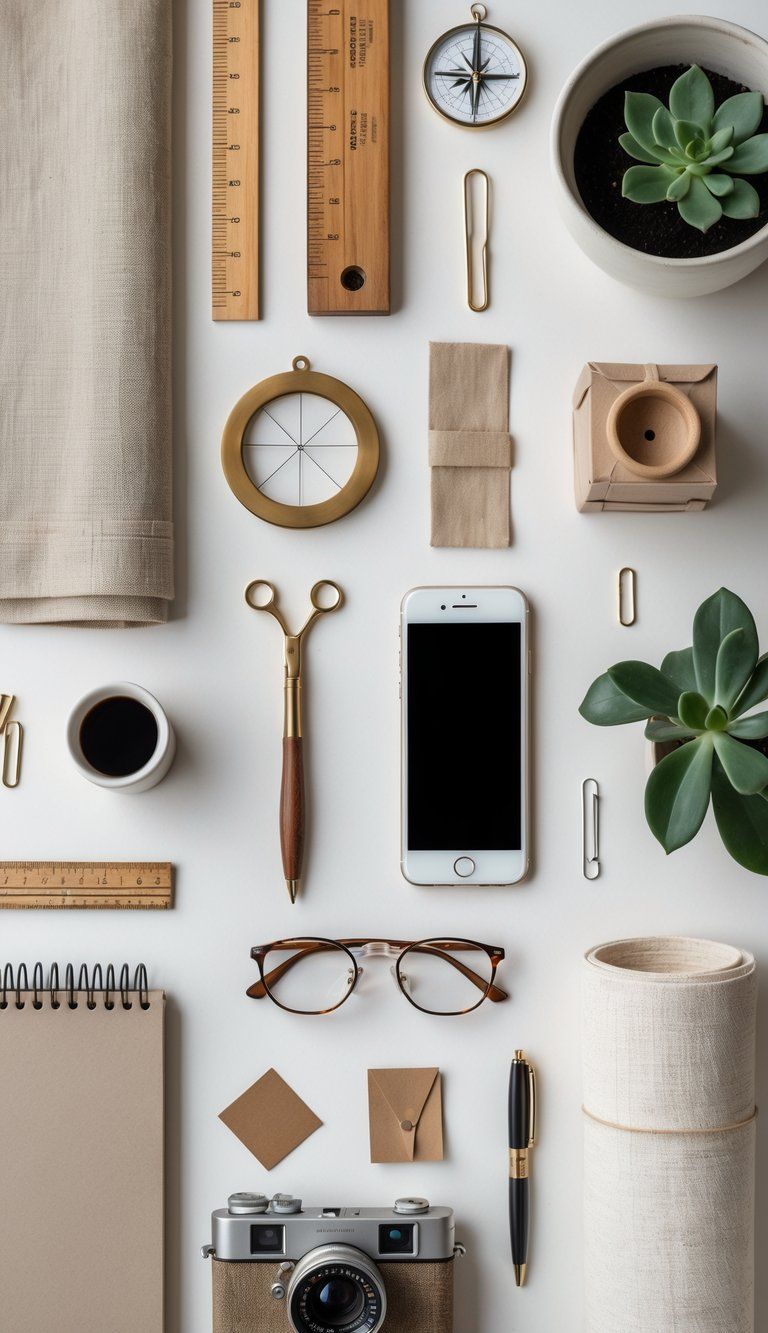
Think of timeless interior design as a balancing act. You mix traditional elements with just enough modern touches to keep things interesting.
High-contrast color schemes like black and white, neutral-toned furniture, and strong focal points have proven themselves over the years. These basics give you a solid foundation that you can update easily with a few seasonal changes.
When you skip the urge to chase every Pinterest trend and focus on quality pieces with classic style, your home ends up feeling both current and timeless. Custom millwork, architectural details, and carefully chosen statement pieces reflect your personality while still looking great as styles shift.
Plus, this approach is usually a lot more cost-effective. You won’t need to swap out everything just because the latest fad faded away.
Foundations of Timeless Design
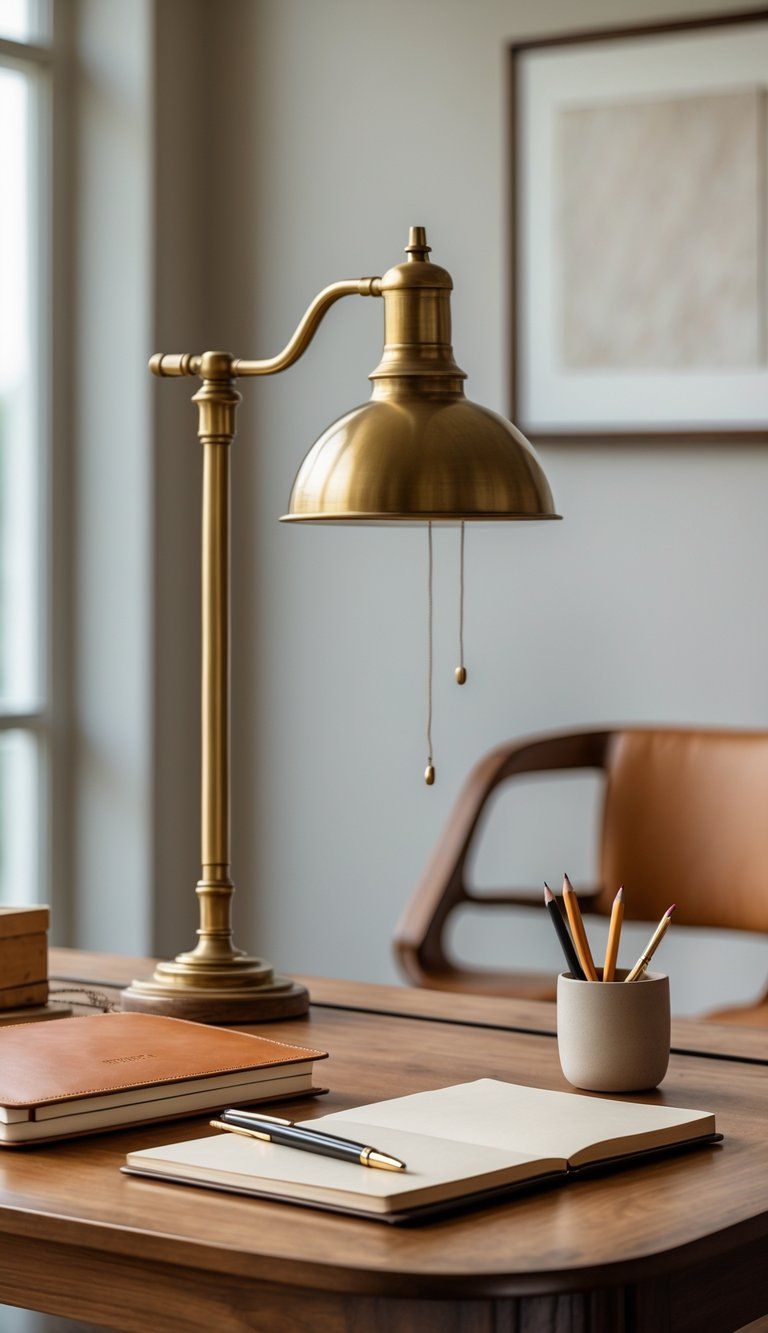
If you want spaces that last beyond passing trends, you really need to understand a few key design principles. The foundations of timeless design rest on certain elements that keep their charm, no matter the decade.
Understanding Timelessness
Timeless design doesn’t mean you ignore trends altogether. It’s about choosing elements with real staying power.
A timeless space feels right, whether you look at it now or ten years from now. That’s the goal, isn’t it?
Quality materials really matter here. Wood, stone, and metal age well and pick up character as the years go by.
Color choices play a huge role. Neutral palettes have lasting appeal and let you swap out small accents when you want a change. Cream, beige, gray, and soft whites all make great starting points.
Proportion and scale create a balance that just feels good. Maybe that’s why classical architecture still looks so pleasing, even centuries later.
Key Principles and Characteristics
Simplicity is honestly the heart of timeless decor. Clean lines and uncluttered rooms let you appreciate quality pieces instead of drowning in stuff.
Functionality should drive your decisions. Pretty but useless spaces end up feeling dated and frustrating fast. Everything needs to earn its spot.
Details make all the difference. Well-crafted moldings, solid hardware, and careful finishes give rooms a sense of intention and completeness.
Mixing traditional and contemporary elements adds a little spark. Maybe you pair a classic sofa with modern art, or combine antique furniture with sleek lighting.
Timeless interiors always feel authentic. Your home should look like you live there—not like a catalog. Meaningful objects and thoughtful design choices tell your story.
Neutral Color Palettes
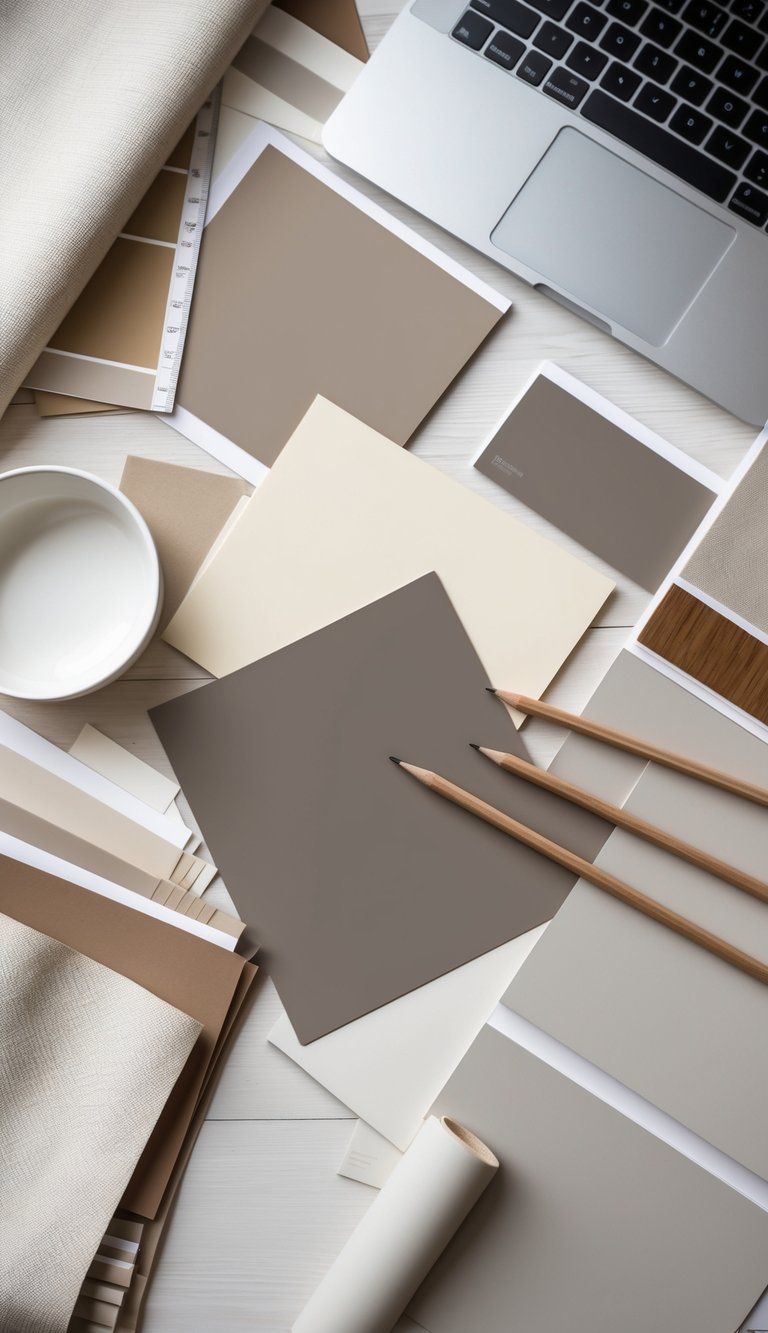
Neutral color palettes are honestly the backbone of timeless interiors. They let you create spaces that feel fresh every year, plus you can update accents as your taste changes.
Classic Tones and Their Versatility
White, beige, gray, and earthy tones never really go out of style. They work with everything and make rooms feel calm, open, and even a bit bigger.
You can use crisp whites for a clean, modern vibe. Or go warmer with creams for something cozier.
The best thing about neutrals? They’re super adaptable. A neutral living room can totally change with just a few new accessories. For example:
- Winter: Try deep blue pillows and chunky textures.
- Spring: Bring in soft green accents and some botanical prints.
- Summer: Add coral or yellow touches.
Neutrals also set the stage for bold furniture or eye-catching art.
Layering Neutrals for Depth
Layering neutrals keeps your space from feeling flat or dull. Start with one base color, then add lighter and darker shades of the same tone.
Try mixing up textures—think linen, wool, velvet—in similar colors. It makes things more interesting.
Warm and cool neutrals together can create a nice balance. Throw in some wood, stone, or jute for a natural touch.
Aim for at least three to five different shades in a neutral room. For example, a bedroom might have cream walls, a taupe headboard, white bedding, and gray pillows.
Metallics like brass or chrome bring in a little shine without messing up the timeless vibe.
Natural Materials and Finishes
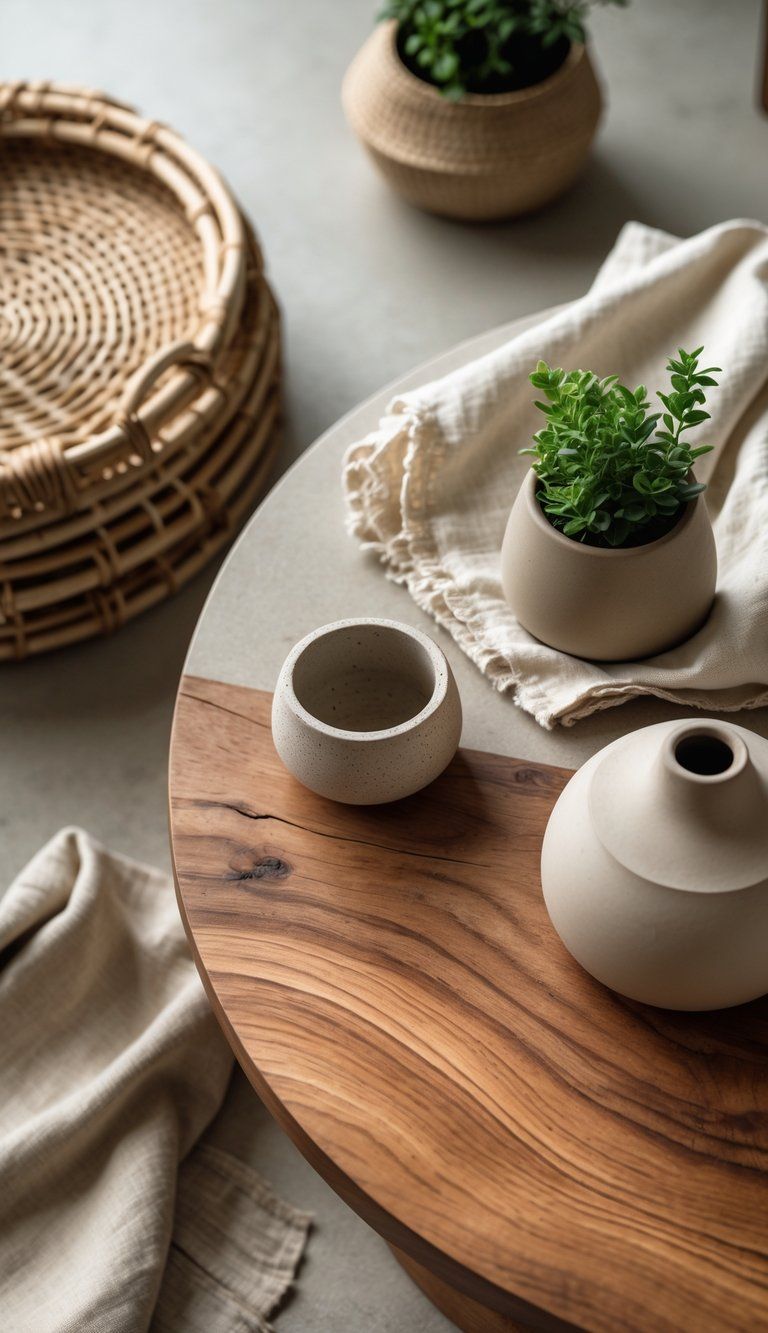
Natural materials instantly add warmth, authenticity, and that classic feel to a room. They connect you to nature and usually last way longer than synthetics.
Incorporating Wood Elements
Wood is about as versatile and timeless as it gets in home design. Hardwood floors—especially oak and walnut—have looked elegant for centuries.
Exposed wooden beams bring character and a sense of history to any living space. They work in both rustic farmhouses and sleek, minimalist homes.
Built-in wood shelves give you storage and visual warmth. Medium wood tones are the sweet spot—they hide wear better than light woods and don’t date as fast as super dark finishes.
Try adding smaller wood accents like cutting boards, serving trays, or decorative bowls. They add texture without any big commitment.
The Appeal of Stone and Marble
Stone and marble have been decorating homes for ages, and there’s a reason for that. No two pieces are exactly the same, so you get something unique every time.
Marble countertops look stunning in kitchens and baths. White Carrara marble is a classic, but quartzite is a tougher choice for busy spots.
Stone fireplaces naturally draw your eye and give a place a sense of permanence. They age beautifully, picking up patina as the years go by.
If you’re not ready for a big investment, try stone coffee tables, lamp bases, or decorative objects. They add weight and texture without taking over.
Using Quality Textiles
Good textiles soften up a space and make it feel welcoming. They’re also the easiest thing to swap as your style changes.
Cotton, linen, wool, and silk have all stood the test of time. They feel nicer, last longer, and just get better with age.
If you use a sofa every day, it’s worth investing in high-quality upholstery. A well-made couch in natural fabric keeps its shape and looks good for years.
Mix up textures for more interest—smooth silk pillows with chunky wool throws, or crisp linen curtains next to a plush rug. That variety gives depth without needing trendy patterns that might look dated soon.
Architectural Details
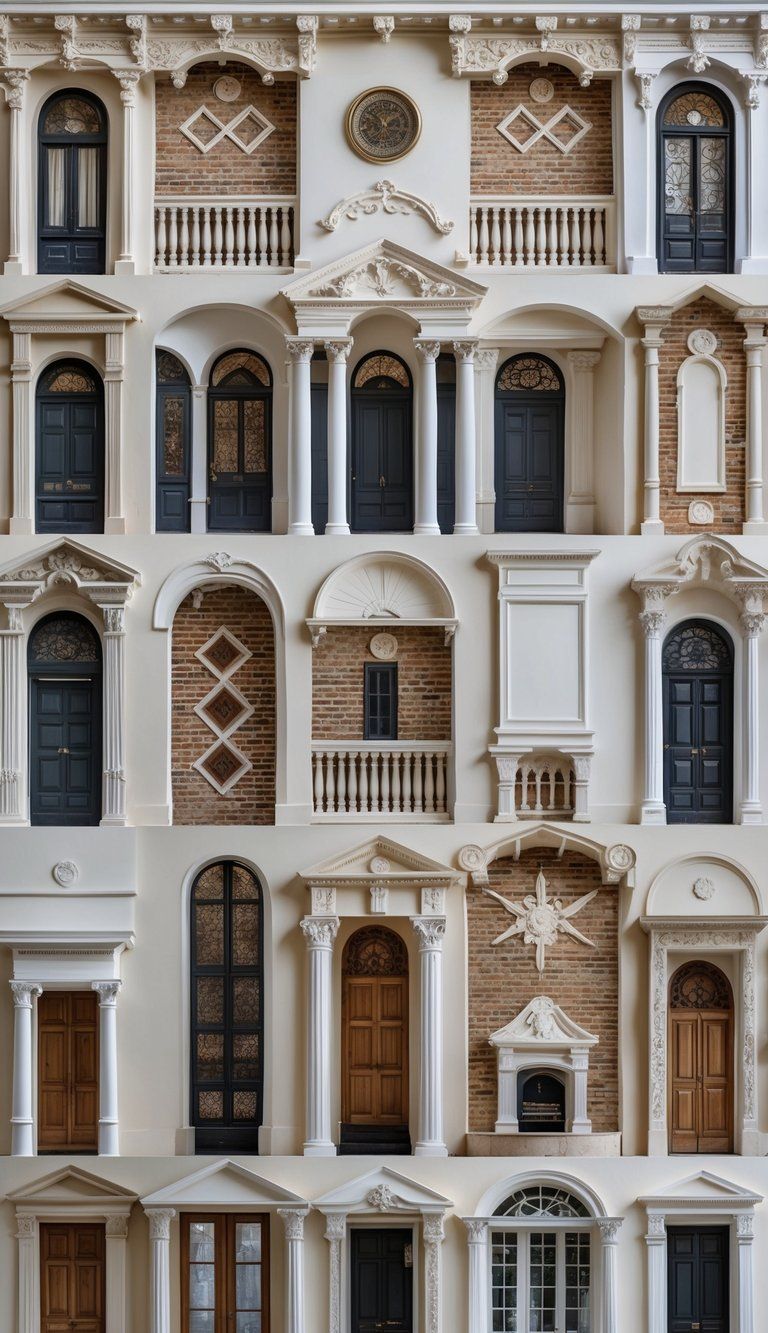
Architectural details give a home its character and make even plain rooms feel special. They form the backbone of timeless design, adding depth and sophistication.
Crown Molding and Wainscoting
Crown molding finishes off the spot where walls meet ceilings. It’s a simple touch, but it instantly makes a room look polished. You’ll see it in homes from hundreds of years ago and in new builds today.
Wainscoting adds texture and helps protect your walls. Usually, it covers the lower third of the wall and comes in styles like beadboard or raised panels.
Match these features to your home’s architecture. Victorian homes look great with ornate crown molding, while Craftsman styles suit simpler shapes. For something modern, try wainscoting in a contrasting color.
Crown molding hides uneven edges, and wainscoting keeps walls safe from scuffs and dents.
Arched Doorways and Wood Beams
Arched doorways create a soft, graceful transition between rooms. People have used arches for thousands of years, and they still look great in modern homes.
You can go big with dramatic entryways or add subtle arches to interior doors. Even a small arched niche in a wall brings charm without a huge remodel.
Wood beams on the ceiling add warmth and a sense of craftsmanship. Exposed beams work in both traditional and modern spaces.
In newer homes, painted beams can add contrast. For older or rustic homes, reclaimed wood beams add real character. Box beams can mimic the look if you don’t have the real thing.
Just make sure these details fit the size and height of your room.
Classic Patterned Elements
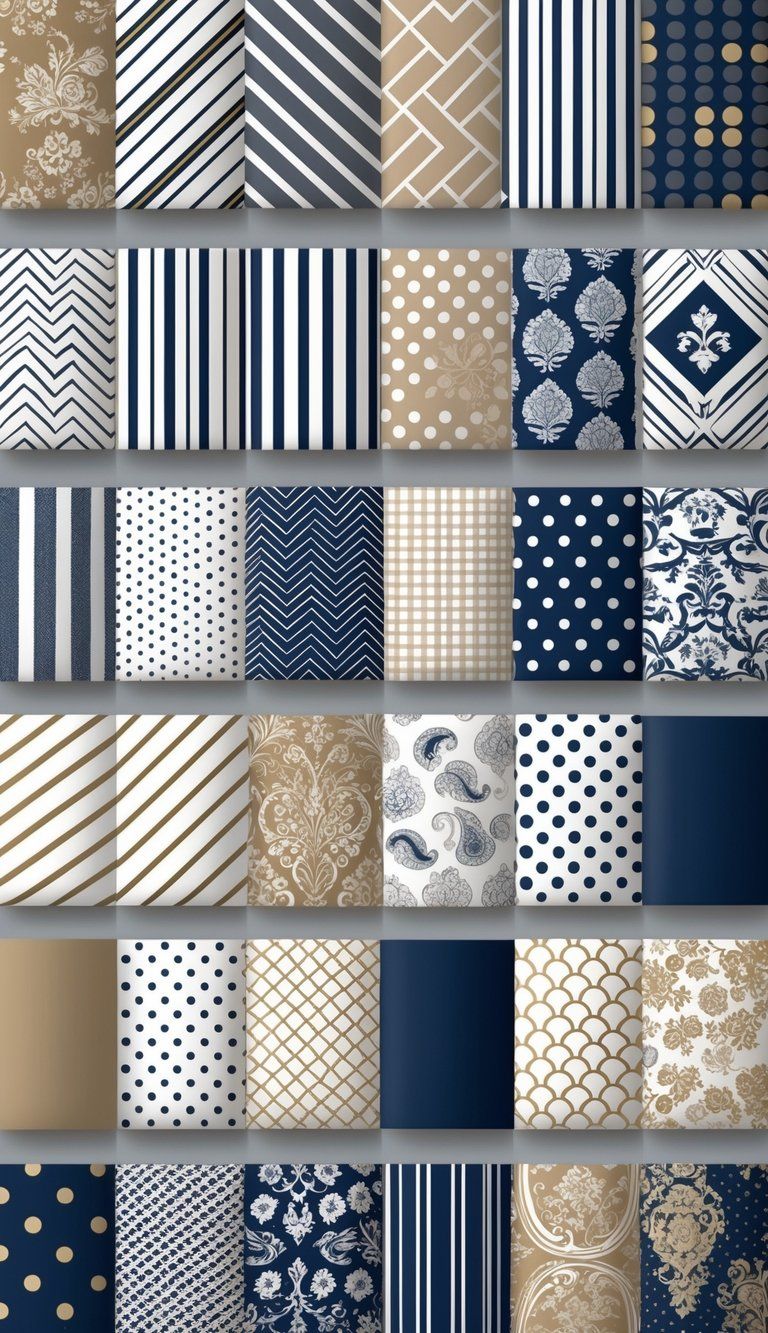
Patterns can inject personality and visual interest into a space. Some patterns have survived trend after trend and still feel fresh.
Stripes and Checkerboard Floors
Stripes always add a little something to a room without going overboard. Vertical stripes make ceilings seem higher, while horizontal ones can stretch a room’s width. You can use stripes in wallpaper, fabrics, or even paint.
Checkerboard floors have graced elegant homes for centuries. Black and white tiles are dramatic, but cream and gray make things softer. These floors look great in:
- Entryways and foyers
- Kitchens and breakfast nooks
- Bathrooms, big or small
The geometric pattern brings a sense of order. For a modern feel, try larger checks or uneven spacing.
Damask and Heritage Prints
Damask patterns are ornate and symmetrical, with roots going back centuries. They bring a sense of history and a little luxury to any room. Modern damasks often use bold colors for an updated twist.
You can use damask in:
- Wallpaper for dining rooms or powder rooms
- Upholstery on statement chairs or sofas
- Throw pillows if you want just a hint
Heritage prints like toile, chinoiserie, and botanical illustrations have a timeless charm. These patterns tell stories and add depth.
Try using these prints in unexpected spots—maybe a ceiling medallion or inside a bookshelf. Just balance bold patterns with solid colors to keep things from feeling too busy.
Furniture That Stands the Test of Time
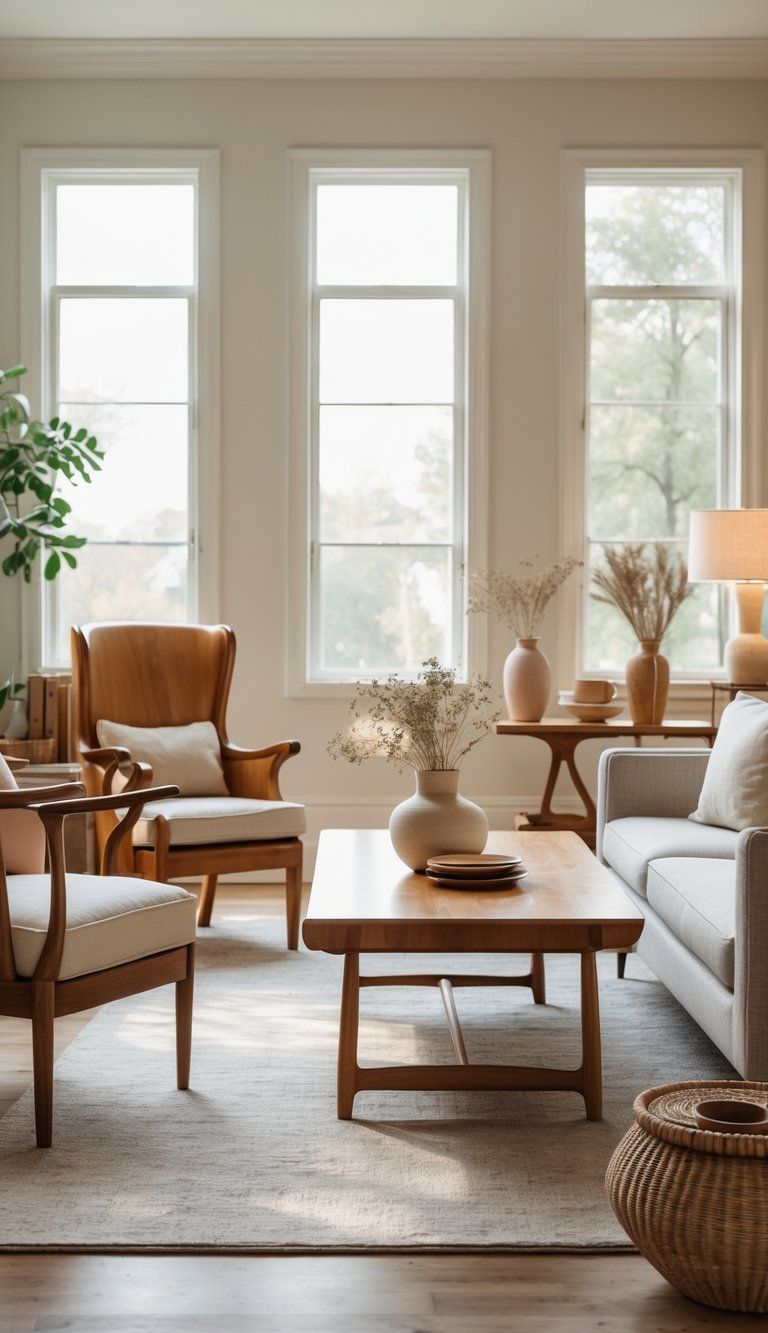
Investing in quality furniture anchors your home’s design for years. The right pieces blend beauty and function and never seem to go out of style.
Typical Timeless Pieces
The wooden dining table is still one of the best furniture investments out there. Solid wood tables age in a way that just gets better—each year adds a bit more character. I always recommend oak, walnut, or maple if you want something that’ll last.
Leather sofas have stayed stylish for ages. Full-grain leather just gets softer and more interesting over time, picking up a patina that adds to your home’s story.
Wingback chairs bring comfort and a classic look. Their unique silhouette has stuck around since the 1700s, which is honestly impressive.
Other timeless picks? Try these:
- Tufted ottomans
- Solid wood dressers
- Simple upholstered headboards
- Windsor chairs
When you’re shopping, check out how the piece is made. Dovetail joints, hardwood frames, and eight-way hand-tied springs show real craftsmanship and mean your furniture could stick around for generations.
Mixing Classic and Contemporary Styles
Timeless doesn’t have to mean old-fashioned. The most inviting homes usually mix traditional pieces with modern ones.
Try putting an antique wooden table with sleek, modern chairs. That contrast makes things interesting and keeps your space from feeling stuck in the past.
Quality mid-century modern pieces really work with almost anything. Their simple lines and practical design fit in with both traditional and newer styles.
If you want to mix styles, keep these ideas in mind:
- Make sure your pieces are a similar scale
- Stick to a color palette that ties things together
- Balance bold pieces with simpler ones
Don’t worry about mixing materials. A marble table with wooden chairs can look amazing and unexpected.
The best timeless spaces feel like they came together over time, not in one shopping trip. They tell your story with pieces you love and want to keep around.
Essential Interior Features
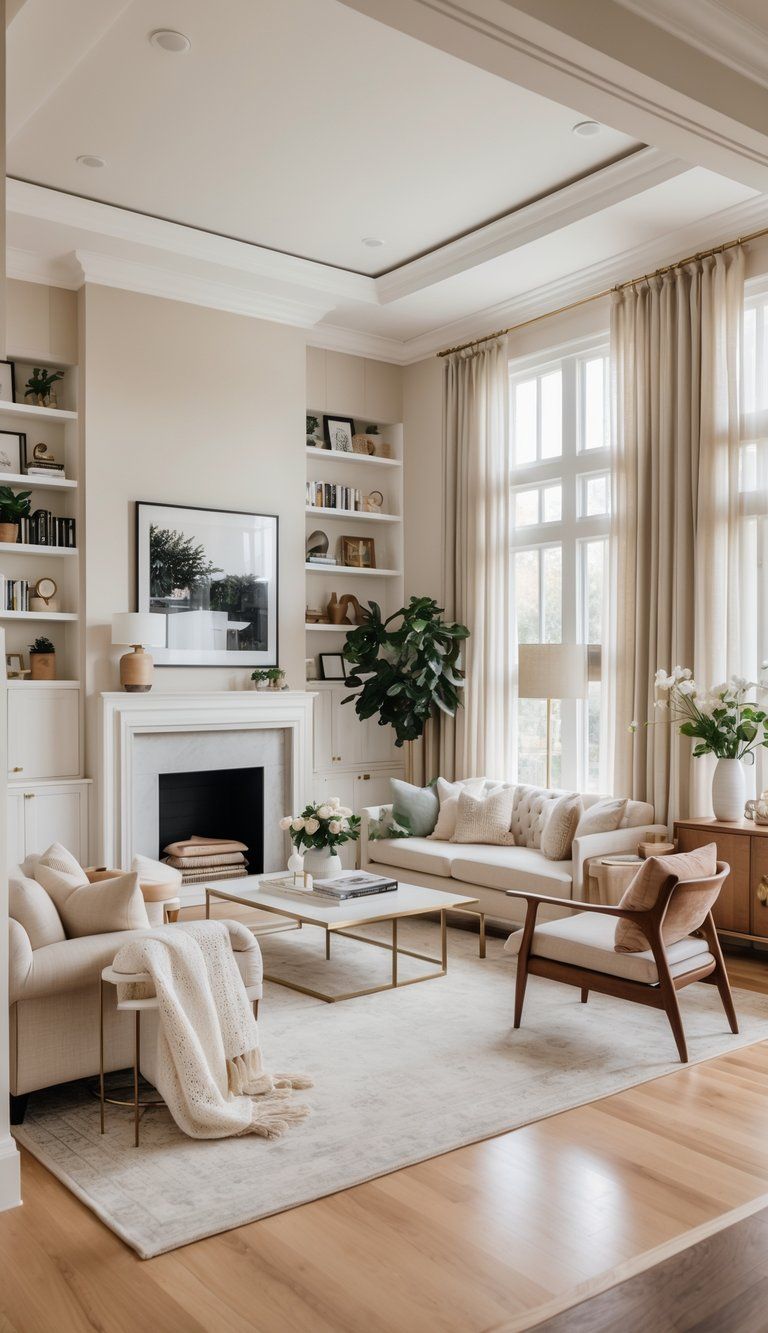
Some design elements just outlast trends. They add both function and beauty, and honestly, they make your home feel special for years.
These architectural features bring character while making life easier every day.
Fireplaces as Focal Points
People still want fireplaces, and for good reason. They anchor a room with timeless appeal. Besides warmth, they create natural gathering spots and instantly make a space feel elevated.
You can pick from traditional wood-burning, easy gas, or even sleek electric models now. The mantel and hearth? Perfect for showing off your style.
Want your fireplace to stand out? Try these fireplace design tips:
- Add built-in cabinetry for a custom look
- Go with natural stone or brick for texture
- Keep the mantel simple so you can change up your decor
- Arrange furniture to face or frame the fireplace
Even in summer, fireplaces draw the eye and define the architecture of the room.
Built-In Bookshelves and Shelving
Custom shelving turns empty walls into useful storage that feels like it belongs. Built-ins save space and add real value to your home.
Unlike freestanding shelves, built-ins fit your space and needs exactly. Use them anywhere—around windows, doors, or to make a cozy reading spot.
What’s great about built-ins? They’re so flexible:
- Show off collections or things that matter to you
- Store books in a way that’s tidy and easy to reach
- Mix up horizontal and vertical shelves for interest
- Add lighting to spotlight special pieces
Don’t fill every shelf. Leaving some open space helps your favorite things stand out and keeps things from looking crowded.
Flooring Choices That Last
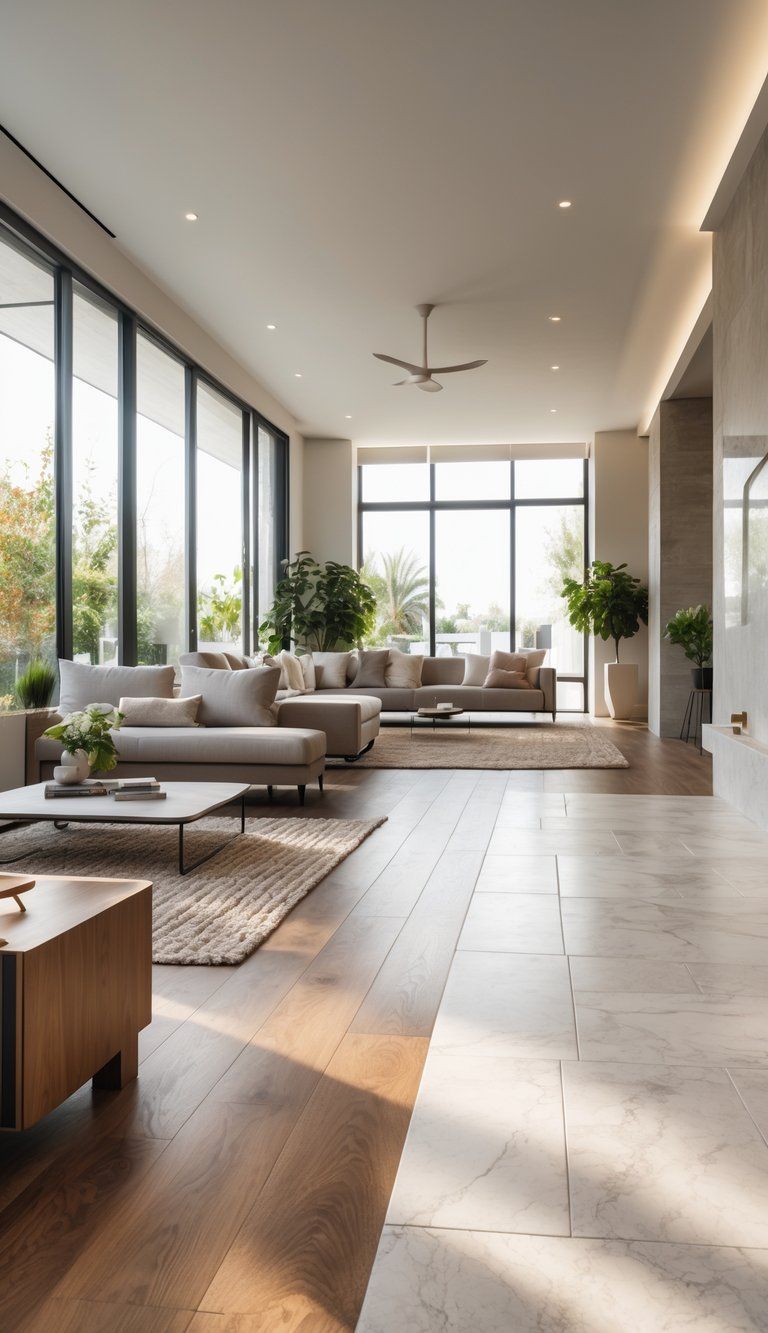
When you’re picking flooring, a few materials really do last—both in style and strength. The right floor can ground your home for decades.
The Enduring Appeal of Hardwood
Hardwood floors are a classic for a reason. With a little care and an occasional refinish, they can last up to a hundred years. Oak, maple, and walnut are favorites because they’re tough and look great.
Hardwood ages in a way that’s honestly kind of beautiful. Unlike synthetics, it develops character over time—every scratch and mark just adds to the story. That patina? Most people actually love it.
When you choose hardwood, you’ve got options:
- Solid hardwood: Lasts the longest and you can refinish it many times
- Engineered hardwood: Works better in basements or spots that get damp
- Wider planks: These are popular now, but they’ve been around forever
The natural grain and color variations mean hardwood never feels fake or outdated.
Area Rugs and Layered Textures
Area rugs are perfect with timeless floors. They bring warmth, color, and texture, and they help protect your floors, too.
Natural fiber rugs like wool, sisal, and jute are durable and always look good. Wool rugs, especially, can last for generations if you take care of them. Persian and Oriental rugs have been prized for centuries and still show up in stylish homes everywhere.
Layering textures keeps things interesting. You can:
- Put a bold rug over a bigger neutral one
- Switch out rugs with the seasons
- Mix different pile heights for texture
Area rugs are flexible. As your style changes, you can swap them out and keep your classic floors underneath.
Lighting for Longevity
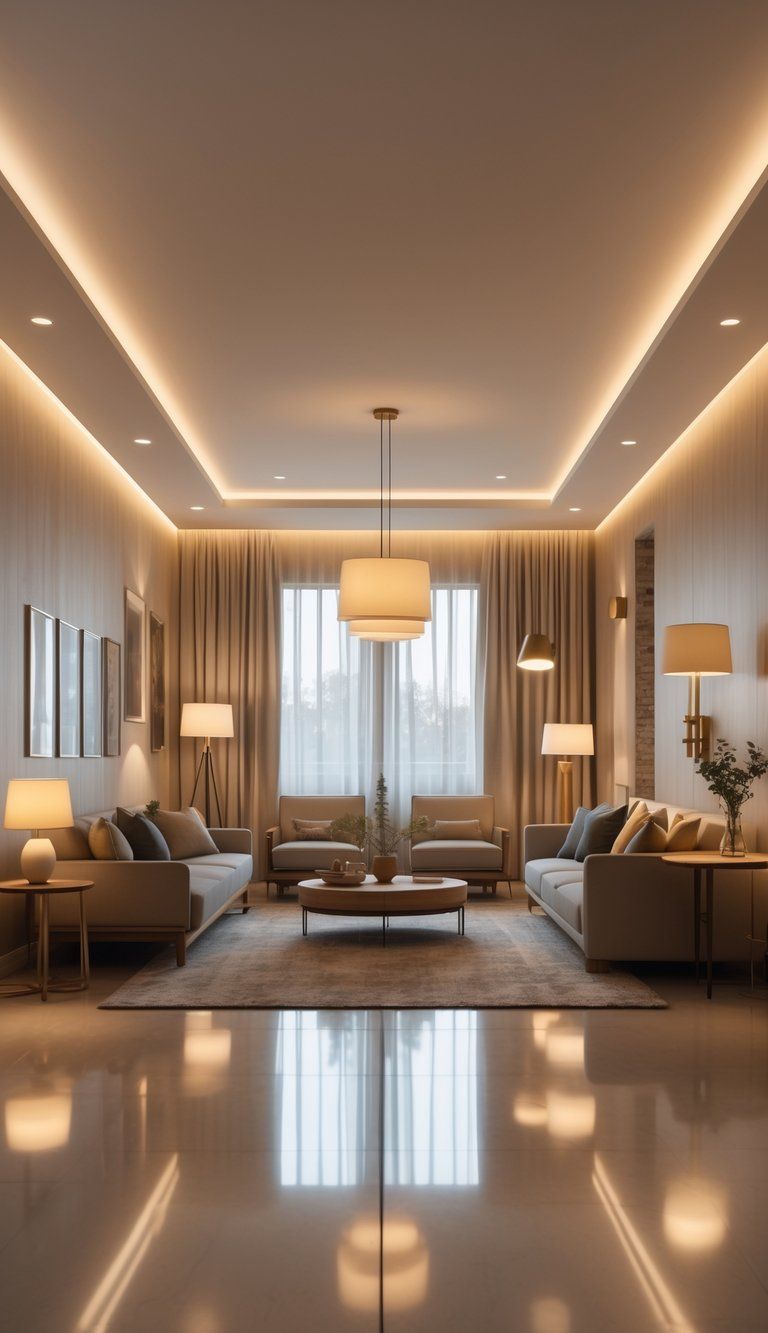
Lighting can totally change a room. It sets the mood and shows off your favorite features.
Statement Lighting Fixtures
Statement lighting is like jewelry for your house. It adds personality and draws the eye. Chandeliers with clean lines and quality materials—think brass, crystal, or hand-blown glass—have been in demand for ages.
Pendant lights with simple shapes look great over kitchen islands or dining tables. They catch attention but don’t take over the room.
Wall sconces in classic finishes give ambient lighting and act as built-in accents. They’re great in hallways, bathrooms, or next to beds.
When you pick statement lights, choose ones that fit your space’s vibe, not just what’s trendy right now. Good craftsmanship matters—a well-made fixture will last a long time.
Natural Light Enhancement
Maximizing natural light makes rooms feel bigger, brighter, and just happier. Keep window treatments simple—Roman shades, plantation shutters, and classic drapes never really go out of style.
Mirrors can help bounce light deeper into your space. Put them across from windows to double the effect.
Glass doors, transoms, and clerestory windows bring sunlight into rooms that might otherwise feel dark. If you’re renovating, these are worth considering.
Glossy white ceilings and light walls reflect daylight best. Add in glass tables or metallic accents to boost the effect.
And don’t forget—clean windows make a huge difference. Regular cleaning keeps everything looking clear and lets in more light.
Metallic Accents and Finishes
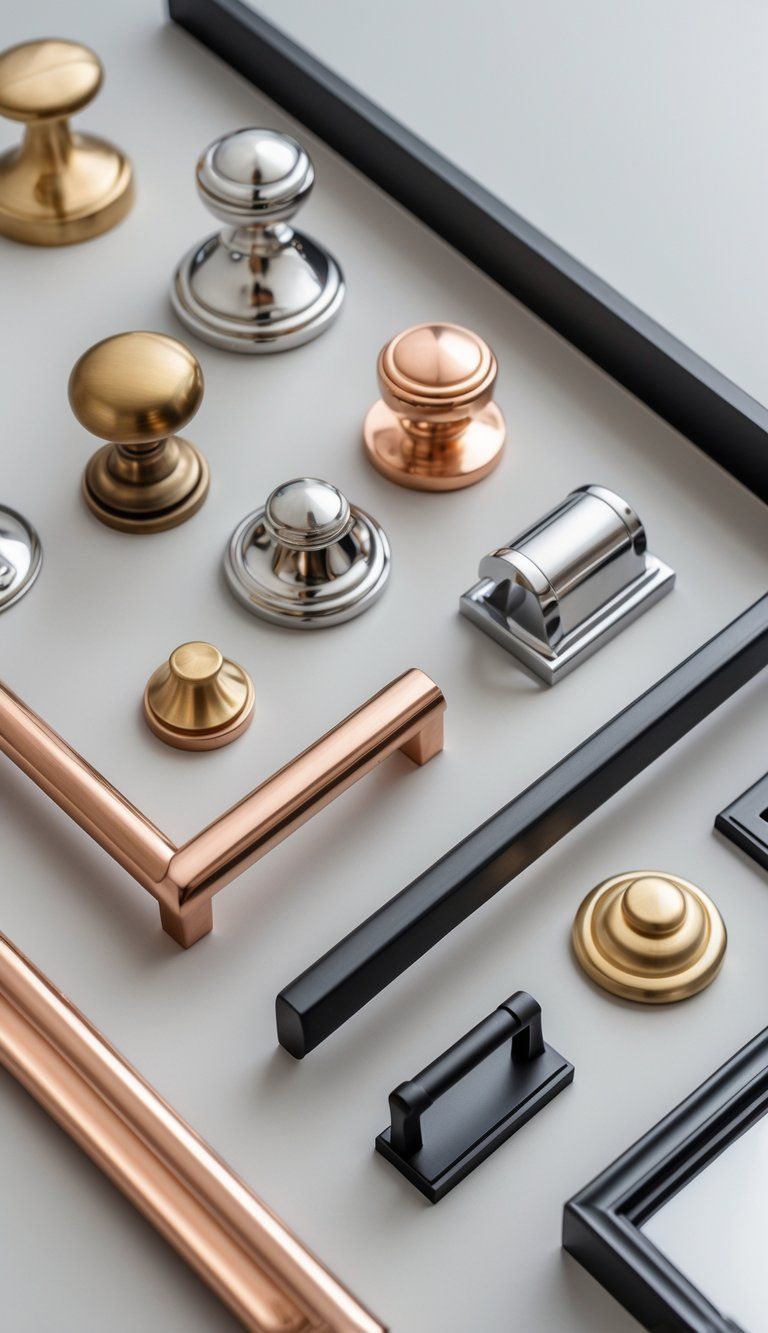
Metallic accents bring a bit of timeless shine and texture to any room. You can go subtle or bold, but either way, they catch the light and add interest.
Timeless Appeal of Brass and Bronze
Brass and bronze finishes have real staying power. These warm metals add instant character and hint at history, even in modern spaces. Unlike trendy metals that fade fast, brass and bronze pick up a gorgeous patina as they age, which just makes them cooler.
Try these ways to bring brass or bronze in:
- Light fixtures—pendants, sconces, or chandeliers
- Cabinet handles and doorknobs
- Decorative pieces like vases or bowls
- Table legs or chair frames
Mixing brass with wood or stone keeps things grounded and balanced. That combo works in just about any style.
Subtlety with Matte Black
Matte black finishes add a modern edge without stealing the show. They don’t show fingerprints like glossy finishes, and the soft, velvety look absorbs light.
You’ll see matte black in:
- Faucets and showerheads
- Window frames and hardware
- Kitchen appliances and range hoods
- Picture frames and mirror borders
Matte black acts as a neutral anchor, pairing nicely with almost any color. It adds definition and structure without fighting for attention.
For more depth, mix matte black with brass or bronze. The contrast keeps your space from feeling flat or boring.
Gallery Walls and Timeless Art Displays
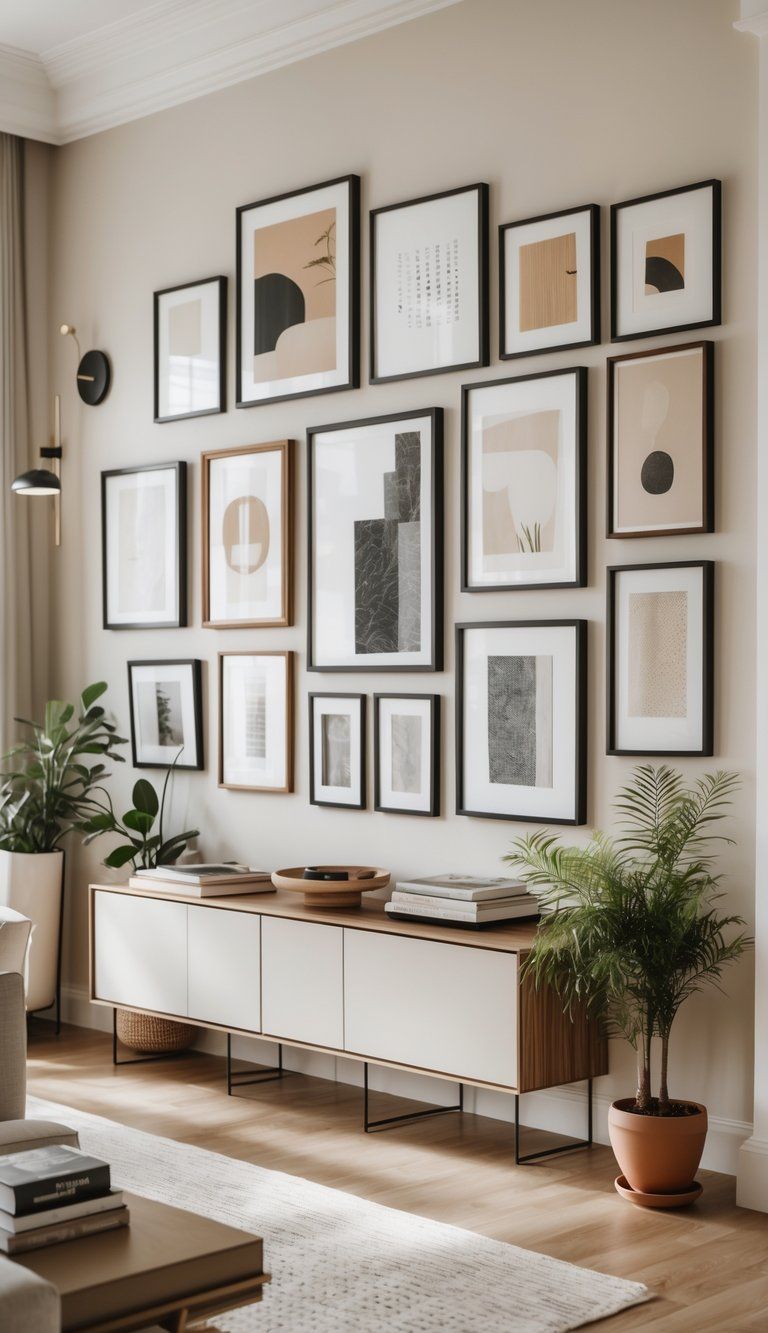
Gallery walls let you show off your style and make any room more interesting. A well-arranged collection of art really can transform a space.
Creating Balanced Collections
Gallery walls never really go out of style. They tell your story. When you’re designing yours, mix frame styles but stick to a theme so it feels pulled together. Black and white photos next to colorful prints? That’s a great way to add contrast.
Balance matters. Use a grid for a formal look or go with a more relaxed, organic layout if that’s your vibe. Lay everything out on the floor first so you can tweak the arrangement before you start hammering nails.
Here’s a simple recipe for a timeless gallery wall:
- 60% personal photos
- 30% artwork or prints
- 10% objects with dimension (like mirrors or small decor)
Mix up frame sizes, but keep the colors coordinated. Black, gold, and natural wood frames always look classic.
Focal Art Pieces and Mirrors
Mirrors do double duty—they’re useful and make a statement. A gilded mirror instantly adds elegance and bounces light around, making rooms feel bigger. Hang them at eye level for the most impact.
Big art pieces can anchor your whole design. Pick something that speaks to you, but also has broad appeal—landscapes, abstract neutrals, or classic black and white photography are safe bets.
If you use mirrors in your gallery, try these tips:
- Place mirrors to reflect something pretty
- Use sunburst or gilded mirrors as the centerpiece
- Mix mirror shapes with framed art for extra dimension
Round mirrors soften up sharp furniture lines, while rectangular ones suit more traditional spaces. You could even make a whole gallery wall out of different sized mirrors for a bold, timeless effect.
Symmetry and Balance in Design
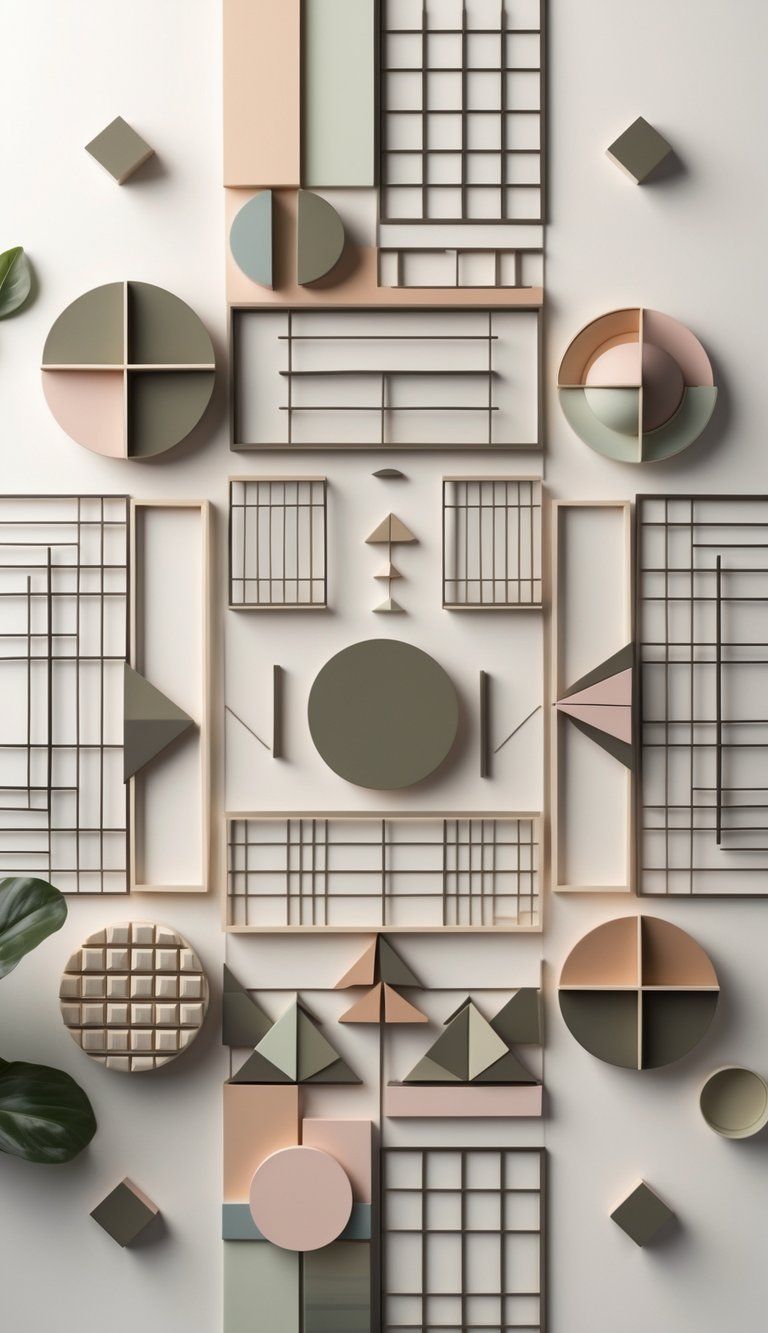
Symmetry brings visual stability to a room. People naturally find balanced spaces more comfortable and inviting.
Achieving Visual Harmony
Symmetry is a tried-and-true design principle. You can create symmetry by arranging furniture, art, or accessories so both sides of a room mirror each other. For example, put matching lamps on either side of a sofa or a pair of chairs facing each other.
Try these approaches for balance:
- Formal symmetry: Use the same items on both sides of a central point
- Asymmetrical balance: Pair different things that have similar visual weight
- Radial symmetry: Arrange pieces around a central focal point
When you’re styling shelves or mantels, put similar objects at each end. It keeps things feeling orderly.
Balance color too. If you’ve got a bold blue chair on one side, add blue accents on the other to tie it all together.
You don’t have to match everything exactly. Even if the pieces are different, keeping heights, colors, or overall weight similar creates a sense of balance that feels intentional and never goes out of style.
Open Floor Plans and Spaciousness
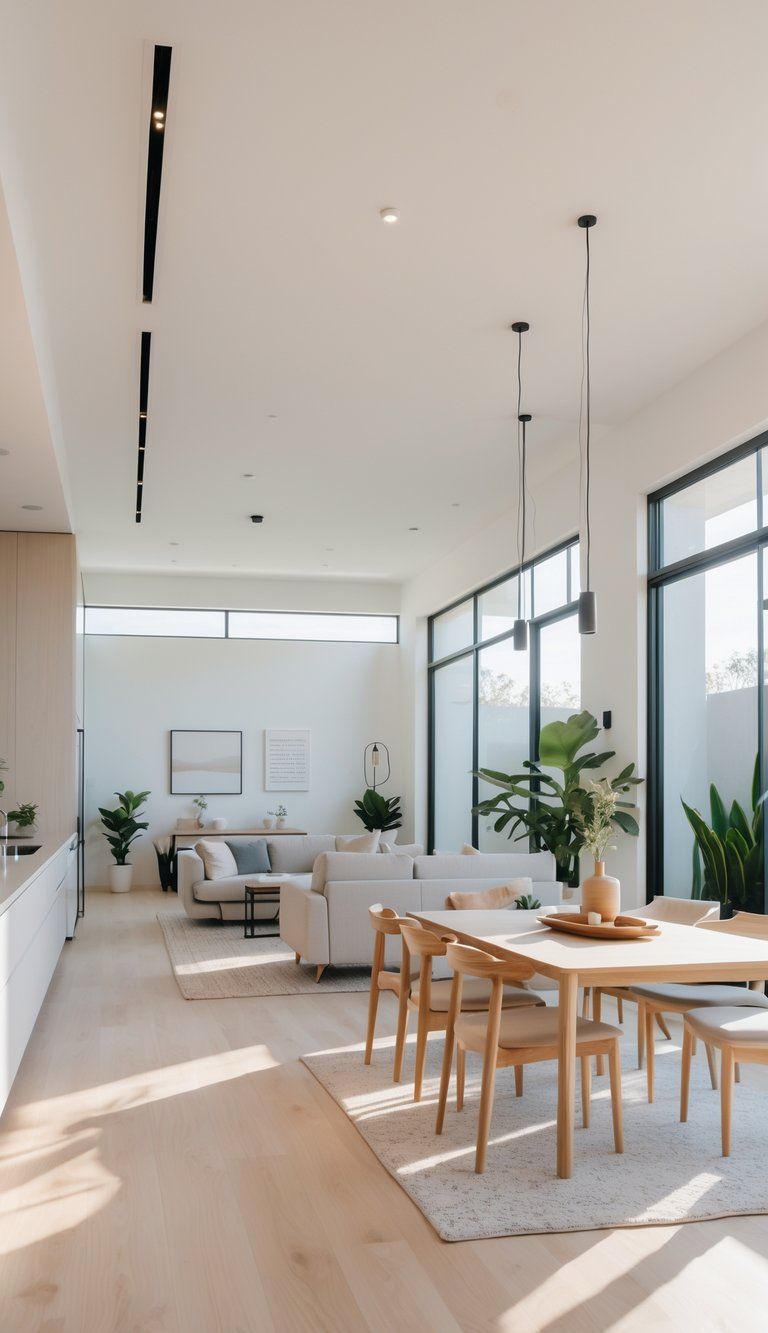
Open floor plans really let spaces flow together. By removing walls between the kitchen, dining, and living areas, you end up with a big, open space that feels connected.
Benefits of Open Flow
Open layouts make homes feel bigger. When nothing blocks your view, your eyes can just wander across the room, and the space seems to stretch out.
Natural light just pours through these kinds of layouts. Sunlight from one window can brighten up the whole area, so you won’t need as many lights on during the day.
If you like to entertain, open spaces are a game-changer. You can cook and still talk with guests or keep an eye on the kids at the same time.
Furniture arranging gets way easier, too. You can move things around as your needs change—no walls getting in the way.
Small homes especially benefit from open concepts. You skip all the wasted space from hallways and suddenly even a compact place feels roomy.
A lot of homebuyers put open floor plans at the top of their wish lists. It’s a smart move if you’re thinking about resale value down the road.
Bringing Nature Indoors
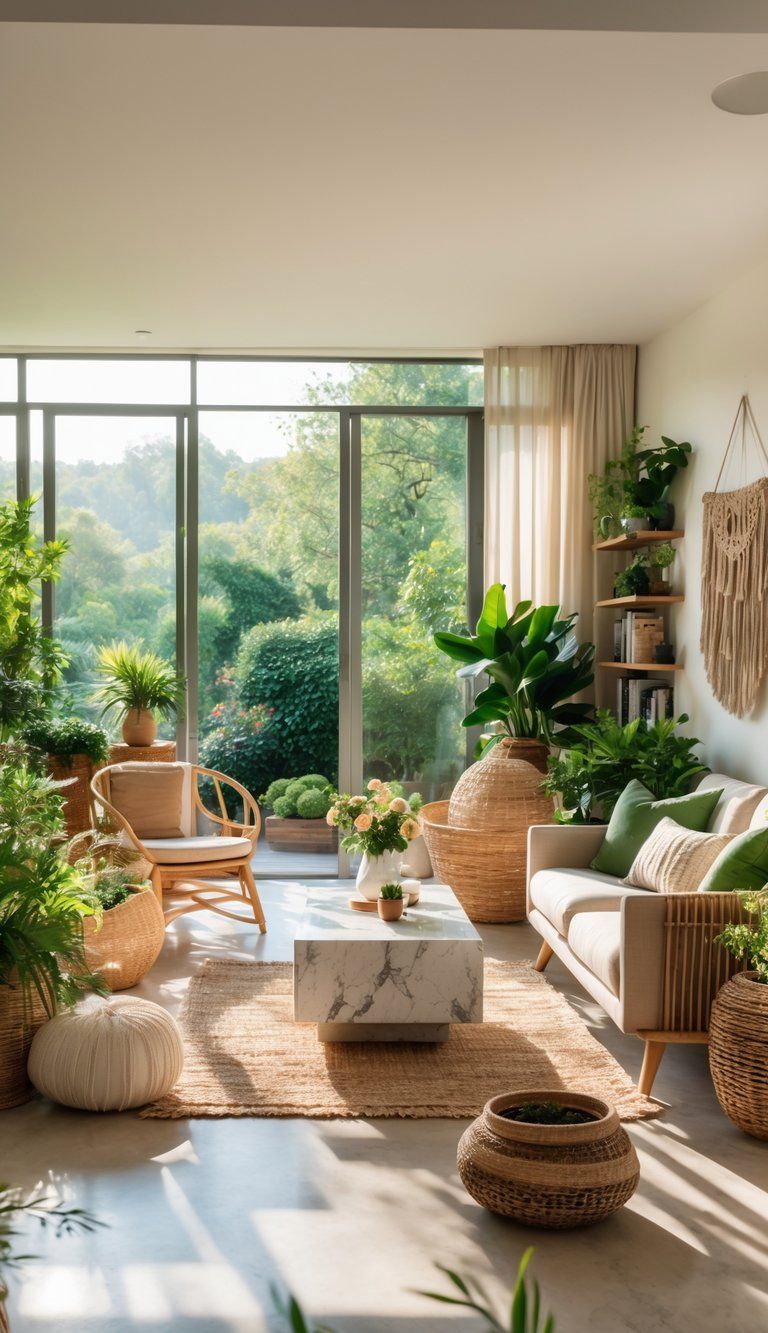
Nature-inspired design brings the outdoors in, which honestly just feels good. Using natural elements in your home adds calmness and some interesting texture.
Use of Greenery and Indoor Plants
Indoor plants instantly freshen up a room. Pop a few succulents on a shelf or tuck a big leafy plant in an empty corner and watch the space come alive.
Snake plants, pothos, and ZZ plants basically take care of themselves, so you don’t need a green thumb. If you want something dramatic, a fiddle leaf fig or monstera can really stand out.
Hanging plants look great in kitchens or bathrooms, especially where counter space is tight. Mixing up plant heights makes things more visually interesting.
Living walls or vertical gardens can totally transform an entryway or dining area. They clean the air and double as living art.
Natural Elements in Accessories
Wood, stone, and other natural materials just add warmth. Try woven baskets for storage, driftwood as wall decor, or stone bowls on the table.
Natural-fiber rugs and throws—think jute, sisal, or wool—bring texture and a cozy vibe. They break up flat surfaces and make things feel a bit more relaxed.
Look for accessories that show off their natural quirks. A hand-carved bowl or a lopsided ceramic vase tells a story that perfect pieces just can’t.
Crystal and geode accents bring a bit of sparkle but still feel earthy. Toss them on a shelf or use them as bookends.
If you’re up for it, a little water feature like a tabletop fountain can add soothing sounds. It’s a small touch, but it really changes the atmosphere.
Iconic Kitchen and Bath Details
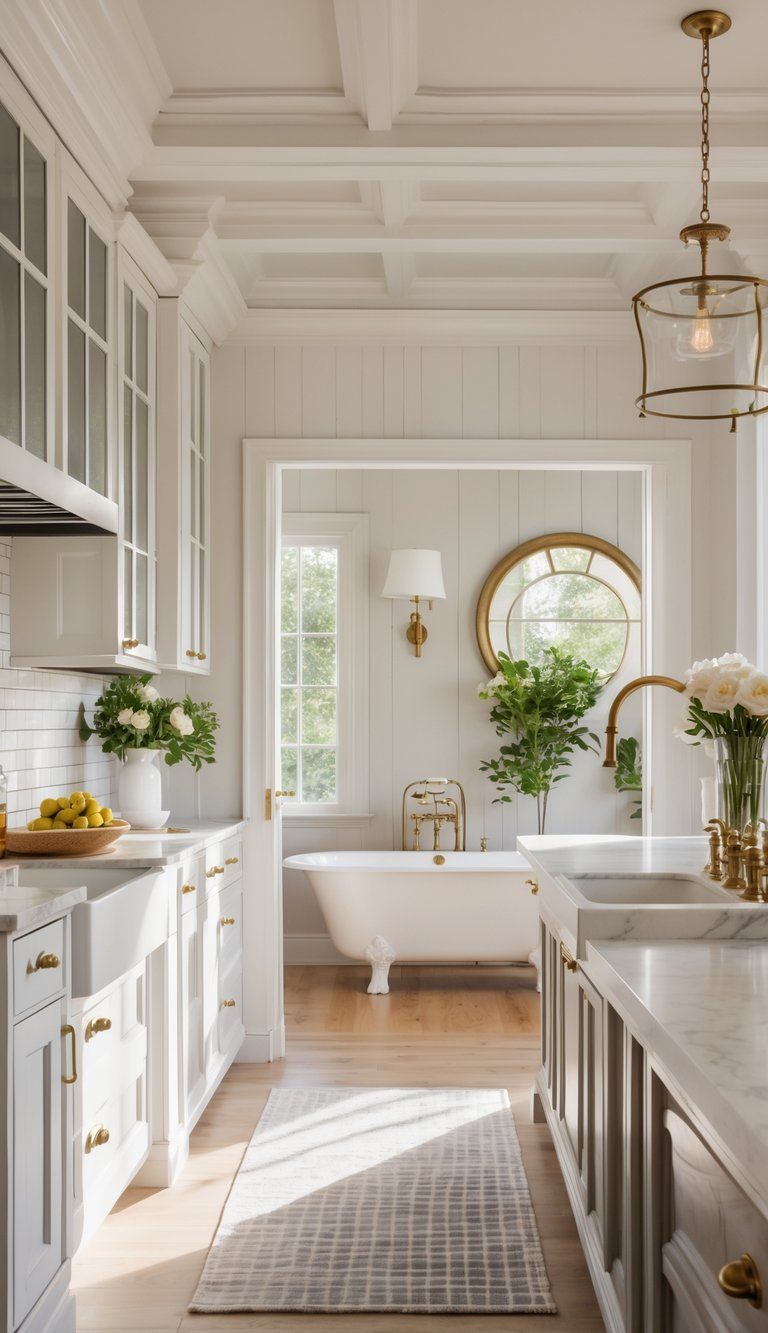
Kitchens and bathrooms really set the tone for a home. Classic design details in these spaces keep things looking fresh and functional year after year.
Timeless Subway Tile Backsplashes
Subway tile just never seems to go out of style. People started using these 3×6-inch tiles in NYC subway stations back in the early 1900s, and they’ve stuck around for a reason.
White subway tile works with almost any style. You can lay it out horizontally, vertically, or even in a herringbone pattern for a little twist.
The best part is its simplicity. Clean lines fit right into farmhouse or modern homes. If you want the tile pattern to stand out, pick a contrasting grout color—otherwise, matching grout keeps things seamless.
For a softer look, try beveled subway tiles or pick neutral shades like cream or pale gray. It’s a subtle way to put your own spin on a classic.
Stone and Marble Surfaces
Natural stone just screams timeless. Marble countertops, with their signature veining, always feel a bit luxurious and somehow get better as they age.
Popular stone options include:
- Marble (classic Carrara or Calacatta)
- Granite (super durable and unique patterns)
- Quartzite (has marble’s looks but granite’s toughness)
- Soapstone (soft, matte, and darkens over time)
Marble does need more care, but a lot of folks think the character it develops is totally worth it. If you want something easier, engineered quartz looks like stone but shrugs off stains.
Stone isn’t just for counters. Marble tile in the shower or stone floors in the bathroom add a touch of elegance. Even a marble windowsill can make a space feel special.
Each slab of natural stone is a little different, so your home ends up with a look that’s truly your own.
Window Coverings and Treatments
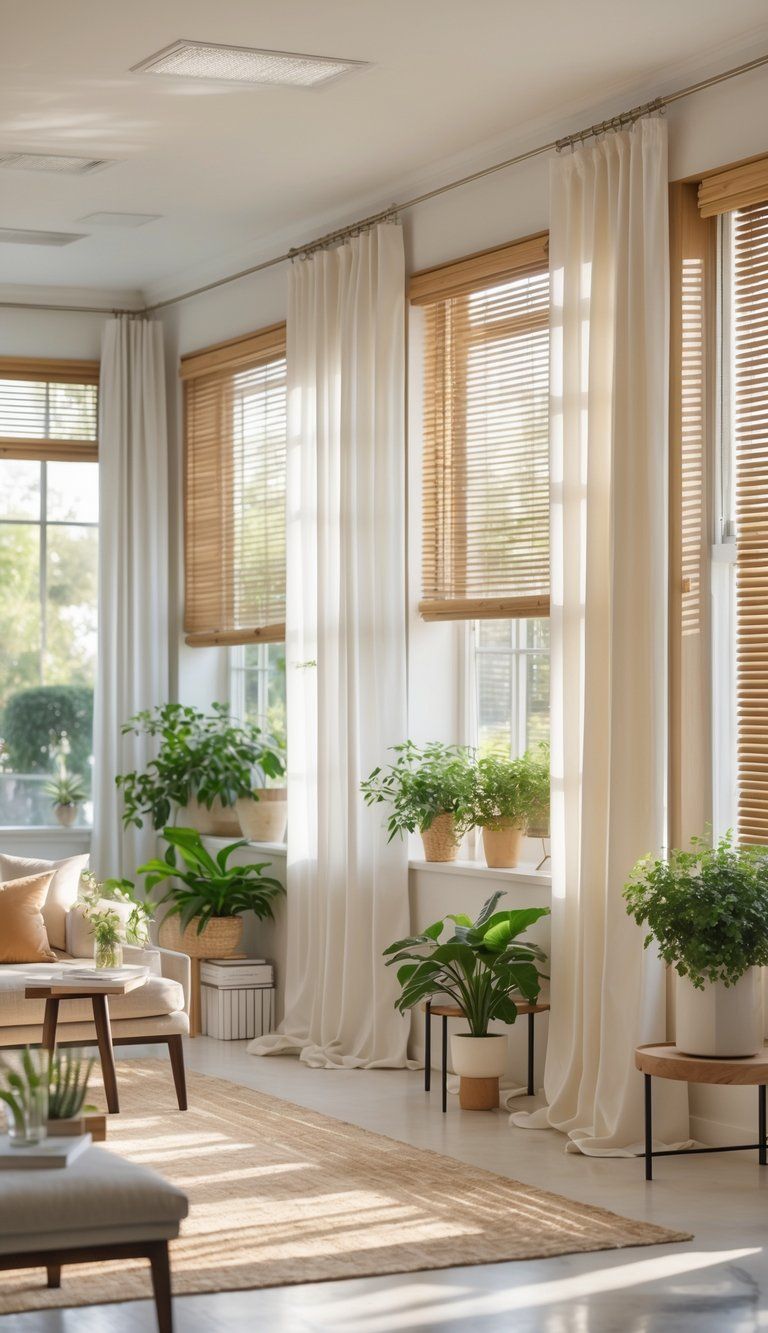
Window treatments do more than just cover glass—they set the mood and make rooms work better. The right choice controls light, keeps things private, and adds a little style.
Classic Styles for Every Room
Plantation shutters stick around for a reason. They give you great light control and add some architectural charm. These sturdy shutters work in almost any room and play nicely with both old-school and modern looks.
Roman shades keep things simple and elegant. When you pull them up, they fold neatly; when they’re down, you get the full pattern or texture. They’re a go-to if you want soft lines without bulky curtains.
Wooden blinds bring warmth and a natural vibe. You can tilt the slats for just the right amount of light, and the wood adds a cozy touch.
Drapery panels are super flexible. You might go for:
- Simple panels for a crisp look
- Pleated styles for something more formal
- Linen or cotton for laid-back rooms
- Silk or velvet if you’re feeling fancy
Woven shades made from bamboo or jute bring in texture and a bit of nature. They filter sunlight and look relaxed but pulled-together.
Color Accents That Withstand Trends
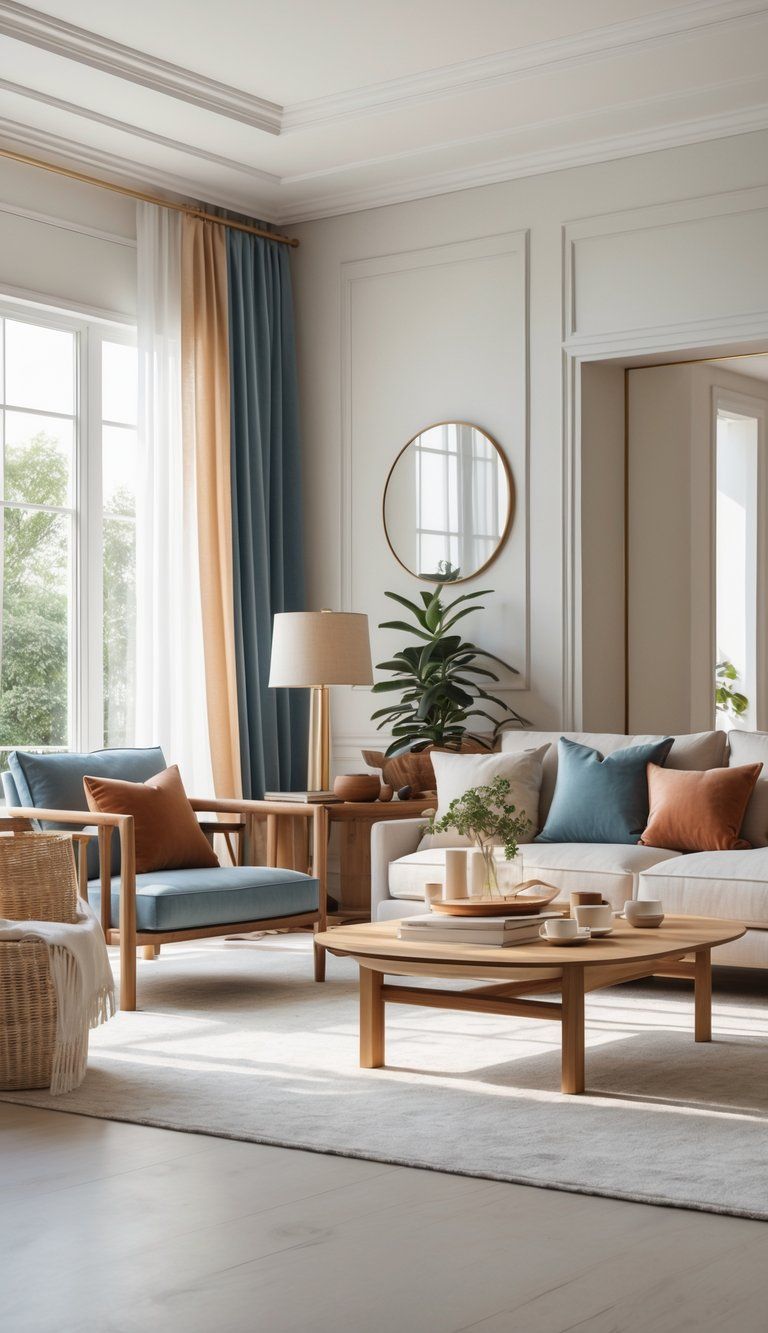
Paint trends come and go, but some color accents just stick around. These classic hues can perk up your home without forcing you into a full makeover every couple of years.
Navy Blue and Other Lasting Hues
Navy blue is the MVP of accent colors. It works just about anywhere and pairs well with most palettes. Unlike flash-in-the-pan trends, navy keeps things feeling sophisticated, year after year.
Try navy on an accent wall, a statement chair, or just a few throw pillows. It looks especially sharp with whites, creams, and grays—classic combos that never get old.
Other timeless accent colors worth a look:
- Forest green: Brings a grounded, natural feel
- Burgundy: Adds warmth without taking over
- Camel: Offers subtle elegance and plays well with cool or warm colors
If you want to dip your toe in, go for smaller touches:
- Throws
- Vases
- Picture frames
- Rugs
These colors add just enough interest without overwhelming the space. You can swap out other things as tastes change, but these accents hold up.
Craftsmanship and Attention to Quality
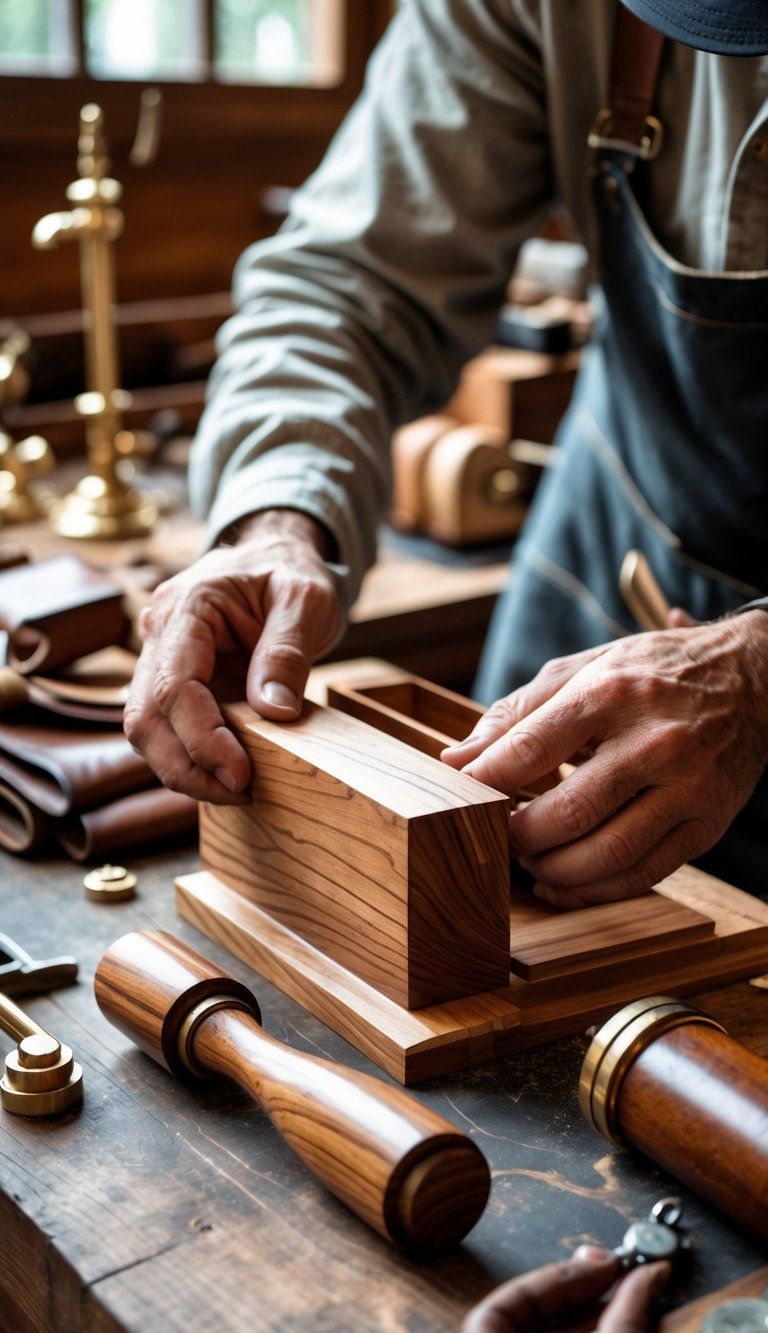
Quality craftsmanship makes all the difference in timeless design. When you choose well-made pieces and pay attention to little details, your home gains character that mass-produced stuff just can’t match.
Enduring Appeal of Handcrafted Details
Handcrafted elements add real soul to your space. When you spot a hand-carved wooden banister or some custom millwork, you’re not just seeing decoration—you’re looking at artistry that’s survived generations.
Quality materials matter if you want things to last. Solid wood furniture, natural stone countertops, and hand-forged metal fixtures might have a higher price tag at first, but honestly, they’ll stick around way longer than any trendy knock-offs.
The magic is all in the details. Dovetail joints in good drawers? They still slide smoothly after years, unlike the cheap stuff that falls apart fast.
Check out tight upholstery seams, balanced shapes, and finishes that actually match up. These little things aren’t just for looks—they make your life easier.
A well-made chair actually supports you the way it should. A quality rug keeps its color and texture, even after years of people (or pets) walking all over it.
When you’re picking pieces for your home, take your time. Run your hands over the surfaces. Open the drawers and doors. You’ll feel the difference—quality craftsmanship just stands out.

